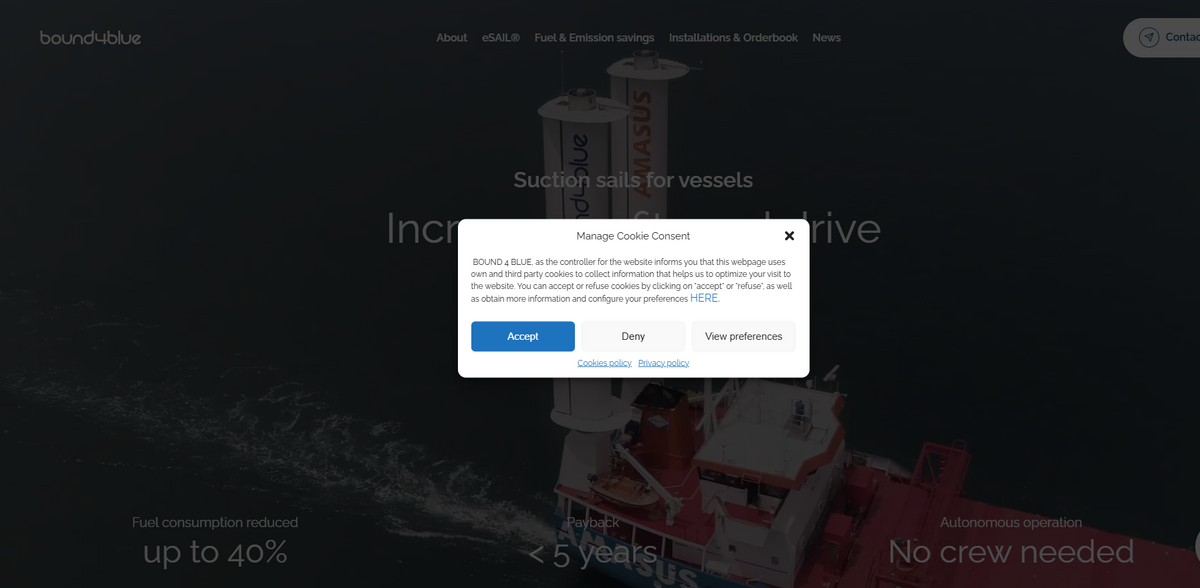Project Overview: Innovative Solar Deck Solutions
The project “PV Systems for Seagoing Vessels” focuses on the development and demonstration of an innovative Solar Deck solution. Co-funded by the European Union through the Just Transition Fund (JTF), this initiative is changing the maritime game by converting unused deck space into a reliable source of clean energy… and all without affecting cargo operations. The Solar Flatrack, designed specifically for bulk carriers and coaster vessels, offers a sustainable and cost-effective alternative to fossil fuels. Its innovative approach not only improves operational efficiency but also delivers environmental benefits, such as measurable reductions in fuel consumption and CO₂ emissions. Additionally, the project’s performance has been objectively validated by TNO, a globally recognized independent research organization, ensuring that its benefits are both real and verifiable.
Main Benefit: Sustainable Solar Integration
The core advantages of the project are realized through tested, practical implementations that bring numerous benefits to maritime operations. Key figures and facts include:
- Solar Flatrack provides a proven solar power solution for bulk carriers and coaster vessels.
- The system offers a cost-effective alternative to fossil fuels, significantly reducing environmental impact.
- CO₂ reductions and financial performance have been objectively validated by TNO, ensuring reliability.
- Real-time monitoring and performance measurement provide instant insights into energy production and savings.
- Improved CII and EEXI ratings contribute to better operational efficiency and sustainability.
Innovative Solar Solutions for the Maritime Industry
Innovation drives this project forward with its Solar Flatrack system. This solution has been extensively verified in both laboratory and at-sea conditions, confirming its capability to generate clean energy reliably. A standout example is the Vertom Tula vessel—the first sea-going vessel equipped with Wattlab’s solar system. Featuring a 77 kWp installation segmented into four independent solar groups directly connected to the 400 V AC hotel load switchboard, the system operates without batteries. Instead, a dedicated control system ensures zero feed-in by engaging or disengaging solar groups in accordance with the instantaneous power demand. This thoughtful design reduces the load on grid converters and diesel generators, effectively enhancing fuel efficiency and improving operational performance.
Real-World Applications of Solar Flatrack
Real-world examples further illustrate the potential of these innovative solar solutions. The Blue Marlin vessel, for instance, integrates a 51 kWp solar array that connects to the 400 V AC switchboard through a combiner cabinet. Here, a bidirectional grid converter (400 V ↔ 500 V) enables solar energy to contribute directly to both the hotel load and the propulsion systems. Equipped with a 120 kWh high-voltage battery that provides peak-shaving capability, Blue Marlin efficiently shares power between propulsion and auxiliary systems. Similarly, the Helios vessel mounts a 117 kWp solar array that feeds into a combiner cabinet linked directly to the 400 V AC switchboard. A 135 kVA energy storage system with 109 kWh lithium batteries not only stabilizes the grid but also stores excess solar power to reduce generator runtime and fuel consumption. It’s no wonder that in October 2024, Helios was officially recognized by Guinness World Records as the inland vessel with the largest solar installation—a true milestone in maritime solar integration.
Advanced Energy System Architectures
The project also pioneers advanced energy system architectures that push the boundaries of maritime technology. On Blue Marlin, the integration of a bidirectional grid converter along with an intelligent control mechanism allows for seamless switching between power sources. This level of sophistication is echoed in the Helios system, where solar power, energy storage, and direct supply to hotel loads come together in a design that minimizes fuel consumption. Such innovations exemplify how the conversion of unused deck space into effective energy solutions can cater to both propulsion and onboard systems. The result is an operational framework that not only reduces the load on traditional energy sources but also enhances overall fuel efficiency and flexibility. These real-time adaptations and controls add a dynamic layer to maritime energy management, ensuring that modern shipping remains at the forefront of sustainable technology.
Project Impact: Driving Sustainability Goals
- SDG 7: Affordable and Clean Energy
- SDG 9: Industry, Innovation, and Infrastructure
- SDG 11: Sustainable Cities and Communities
- SDG 13: Climate Action
- SDG 14: Life Below Water
The Future of Emission-Free Shipping
The integration of solar energy into maritime operations not only elevates the current performance of shipping vessels but also points toward a greener future. The mission to make shipping more sustainable is clearly reflected in projects that transform inland carriers into floating solar parks. There is a vision of transport ships and barges sailing increasingly emission-free, delivering green energy to local companies and households even when idle… a future where independence for captains and crews is as vital as environmental consciousness. The dynamic shifts in operational efficiency and fuel economy, brought on by innovative systems like Solar Flatrack, are driving the industry toward a horizon defined by clean energy and reduced dependency on fossil fuels. Emission-free shipping is not just an aspiration but an emerging reality that promises to revolutionize how marine logistics contribute to a more sustainable world.





















